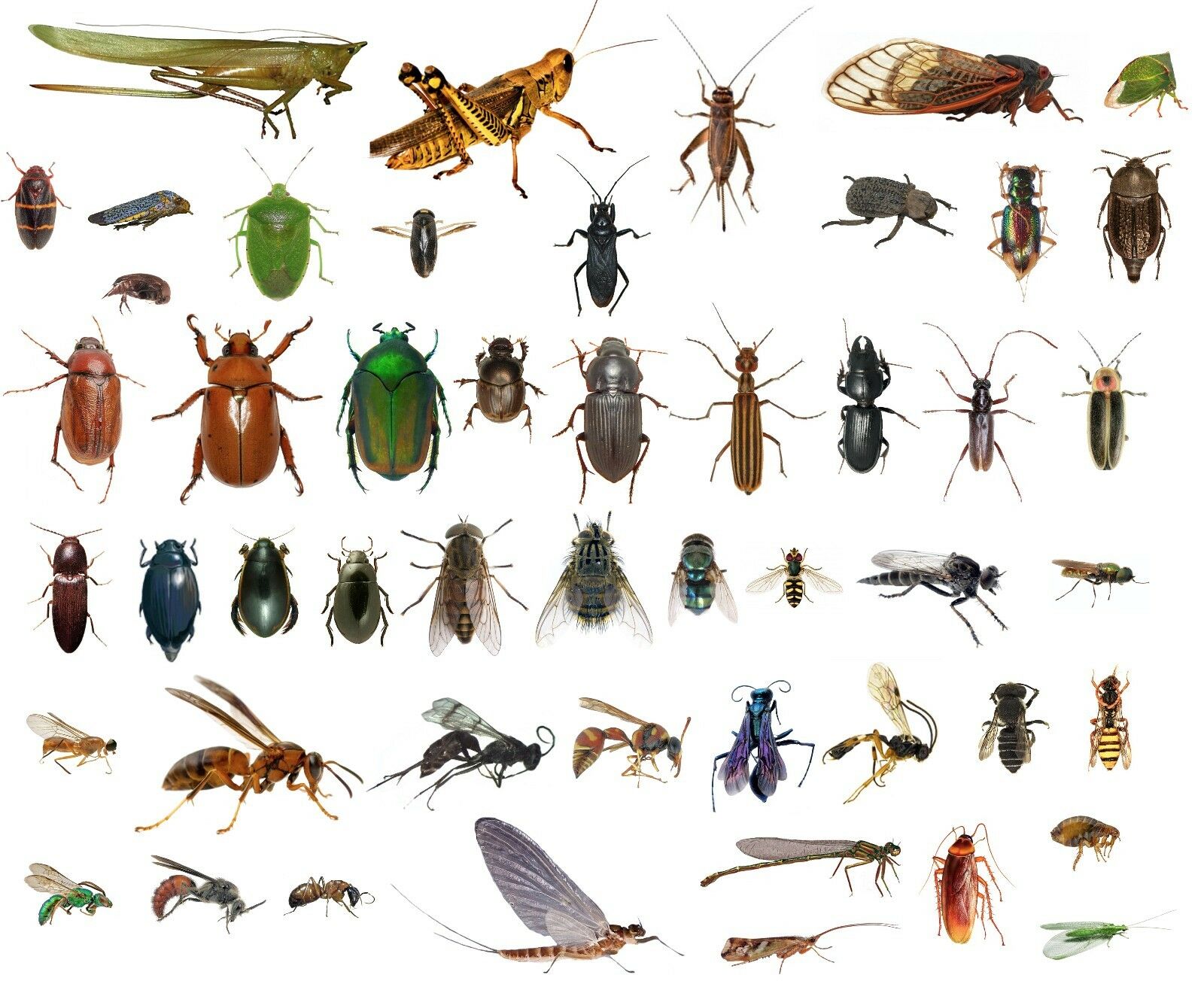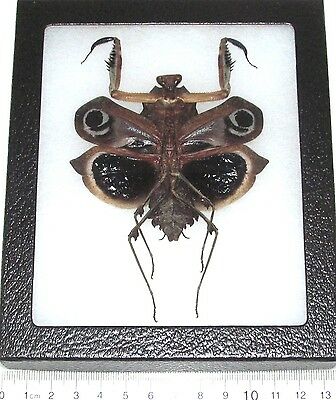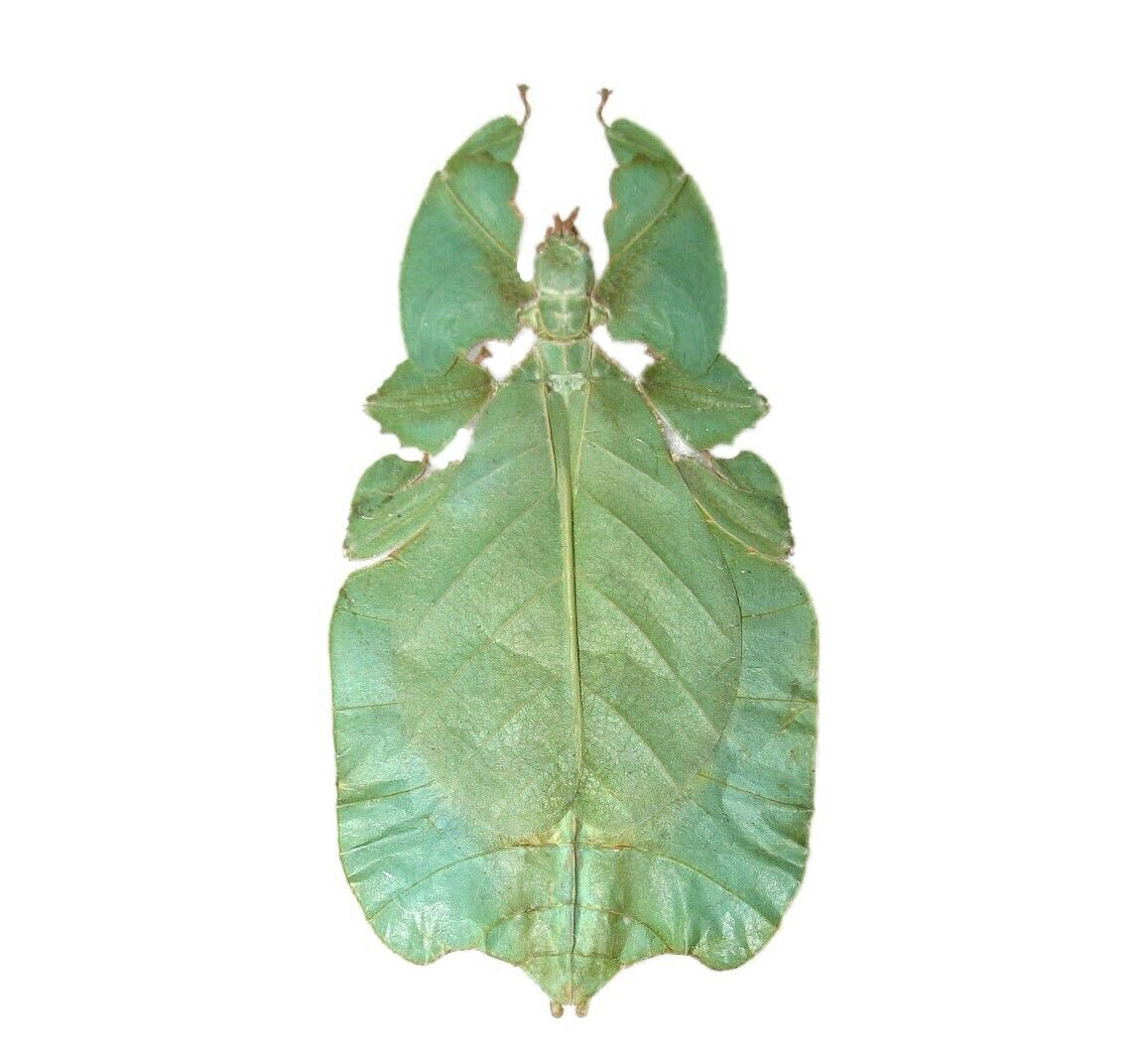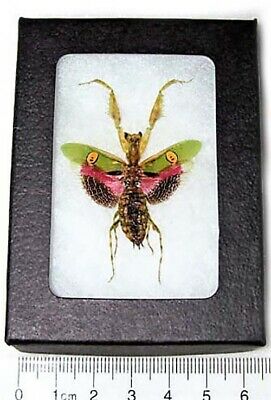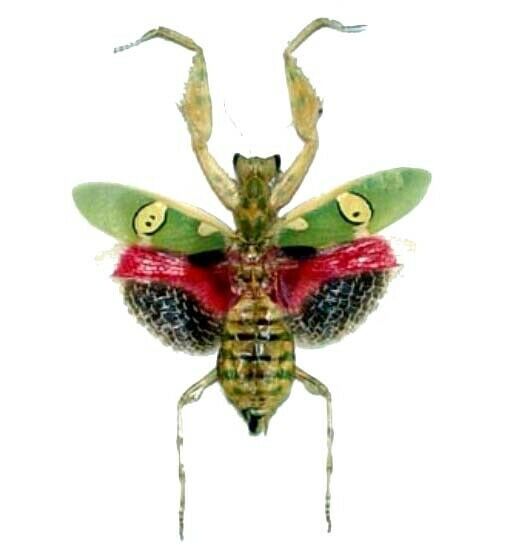-40%
12 BUG Insect Collection Box Set 12 clear blocks Real Specime Teaching Aid
$ 31.67
- Description
- Size Guide
Description
12 genuine different Insects(Bugs) permanently encased in clear lucite material (in separate individual block). The specimens are crystal clear, indestructible and transparent. Safe, authentic and completely unbreakable product put living Bugs right at your fingertips!Anyone can safely explore the Bugs from every angle.
It is clear enough for microscope observation.
Each set has a magnifier for close-up observation.
Size of each block is 4.5x3.0x2.5 cm(1.8x1.2x1.0 inch).
Weight of each block is 30 g.
Total weight of the whole set is 360 g and 600 g with packing box.
The Nature Garden
12 BUG Insect Collection Box Set 12 clear blocks Real Specime Teaching Aid
12 genuine different
Insects(Bugs)
permanently encased in clear lucite material (in separate individual block). The specimens are crystal clear, indestructible and transparent. Safe, authentic and completely unbreakable product put living Bugs right at your fingertips!
Anyone can safely explore the Bugs from every angle.
It is clear enough for microscope observation.
Each set has a magnifier for close-up observation.
Size of each block is 4.5x3.0x2.5 cm(1.8x1.2x1.0 inch).
Weight of each block is 30 g.
Total weight of the whole set is 360 g and 600 g with packing box.
Size of the packing box : 25x14x5 cm (9.8x5.5x2.0 inch)
This is a handmade real animal specimen craft. Each one will be a bit different (specimen size, color and posture) even in the same production batch.
The pictures in the listing are just for reference as we are selling multiple pieces with same pictures.
It is an ideal learning aid for students and kids and also a very good collectible item for every body.
*** These insects are all from China.
Lychee Stink Bug Spotted Red Bug
Brownish Bug Spotted Bug
Camellia Shield Bug Black Bug
Ghost Bug Mary Bug
Flower Bug Red Bug
Arrow Bug Stripe Bug
***
Brownish Bug
-
Eurostus validus
Distribution: China, Vietnam, Burma
Size: 23 – 33 mm
Adults 23-31 mm body length, width of 11-14 mm. Kunzhuang body length, reddish brown, metallic luster. Small triangular head, antennae black, distal turn into yellow. Backplane front chest with the blue and green sheen small-shield nearly equilateral triangle, with a clear wrinkles, red blue and green sides margin foot chestnut, slightly section of the Yellow terminal two sharp thorns. Abdominal back of purple, blue and green side to edge. No. 1 abdominal section at the back of a flying Jinjian on pronunciation, like pear, and by a hard-bone connecting the membrane composition, vibration can be issued through the tympanic membrane, "Ji, Ji," the voice of the enemy and to find dual drive.
Occurred around the annual generation. 4 instar nymphs host plants in the vicinity of the winter weeds Zhe Fu Cong, in May of the following year activities. Dehulling nymph stage four of a total of five age. Adults, nymphs are endangering chestnut, white oak, Quercus Castanopsis such as Ma.
Reddish-brown color, tentacles 4, the end of orange. Backplane front chest, small shield panels, leather-winged edge of a golden sheen, a very eye-catching. Living in low - and middle-elevation mountain, its habitat Green just common oak plant, in the south in March can be seen traces of huge size, will be distributed harassment encountered heavy Xingxiu taste, but some people feel that their aromatic flavor a bit!
Lychee Stink Bug
– Tessaratoma papillosa
Distribution: Southern China, SE Asia
Body length: 20-24 mm
Adult feeding of the stink bug, Tessaratoma papillosa Drury occurred on flowering, tender and tough branches of the host-plant, litchi. However, their feeding behavior in their pre-overwintering and reproductive stages was obviously different. 50%~70%and 100%of adults fed on all the three kinds of branches in their pre-overwintering and reproductive stages, respectively. Placed on these branches, the pre-feeding period of the stink bugs at pre-overwintering stage was longer than that at reproductive stage. The feeding behavior of the stink bugs on different kinds of branches differed greatly. The pre-feeding period of the stink bugs on flowering or tender branches was much shorter than that on tough one. The stink bugs preferred feeding flowering and tender branches in the choice test. The contents of water, nitrogen and soluble sugars in flowering and tender branches were higher than that in tough one and the content of soluble sugars in all three types of branches varied during the reproductive stage of the stink bug. Tender and flowering branches differed from tough one in morphology and histology.
Ghost Bug (nymph of Lychee Stink Bug)
Black Bug
Mary Bug (nymph of Human Face Bug)
Stripe Bug –
Graphosoma rubrolineata
Distribution: Northern China, Eastern Siberia, Korea and Japan
The adult body length 8-11 mm, 7 mm wide. First black; Tentacles of brown-black, red yellow base 2. Small black-shield stripe backward unchanged fine,
Both stripe and the direct-shield edge. Foot brown-black, red and yellow legs of a spot; Back in black body and red pick-and longitudinal stripe, black head
Two longitudinal stripe, chest backplane six, small shields on the four films, both full-length. Physical ventral orange-red, some are creatures of black spots.
Leaves and adults in rural gap in the winter, the coming year 4, 5 with the activities of the host eggs on the branches. Early Age
Nymph clusters, scattered after the age of two. Major feeding carrots, fennel and onions.
Red Bug -
Dindymus rubiginosus
Habitat: trees, leaves, sticks. Very common.
Body length of 10mm, dorsal fin red, blue abdominal end.
This species is predatory on caterpillars, snails, beetles, other stinkbugs, etc.
Camellia Shield Bug -
Poecilocoris latus
Distribution: Southern China, India, Vietnam, Myanmar.
Size: 16 -22 mm
Camellia Shield Bug (Poecilocoris latus,family Pentatomidae, order Hemiptera) is a very attractive and spectacular shield bug to be found on the foliage of Camellia and tea bushes on various hillside slopes in tropical and sup-tropical regions. This insect can produce strong defensive odours from their thoracic glands. Females lay clusters of barrel-shaped eggs on plants. There are five nymphal stages. Nymphs start life as herbivores but later become predators or mixed feeders.
Adults 16-20 mm body length, width 10.5-14 mm wide oval egg diameter of 1.8-2.0 mm, nearly round, beginning at the yellowish-green, a few days later showed two purple long grouper, orange yellow before hatching . Nymph general of 3 mm long, nearly circular, orange yellow, with metallic luster, the age of five. In Jiangxi, Fujian, Guangxi and are 1 year to the end of larvae in the soil crevices or under deciduous winter.
Egg stage 7-10 days, the nymph stage seven, two adult life, or longer.
Damage tea, Camellia oleifera. Nymph on smoking in the tea fruit juice, fruit development impact, and to reduce oil production rate, but also because of the smoking-induced tea in the anthrax, but also cause fruit drop.
Flower Bug (nymph of Camellia Shield Bug)
Spotted Bug –
Cantao ocellatus
A Cantao ocellatus or Scutelleridae can be seen on low level area throughout the year. They are otherwise known as shield-backed bugs, and because bugs in this family are usually brightly coloured, they are also known as Jewel bugs.
These insects feed on plant juices; upon sensing danger, they exude a foul smelling substance from a pore on each side of their thorax to repel enemies, or predators. Because of this ability, they are sometimes referred to as Stink bug.
These bugs often have symbiotic relationships with bacteria that aid the insect in the production of nutrients.
At maturity, they measure 18~26mm in length.
Distribution: China, Japan, Korea
Spotted Large Red Bug
– Parastrachia japonensis
Distribution: Japan, China, Korea
Caenorhabditis japonica
n. sp. is described from
Parastrachia japonensis
from Japan. The species is closely related to species of the
Caenorhabditis elegans
group and shares many characters with them. It differs from these species in having blunt spicule tips of complex shape and in lacking a terminal notch in the bursa velum.
Caenorhabditis japonica
n. sp. is further characterised by an anterior end with the lips fused in pairs, long and pointed stegostomal teeth, long fringes on the anterior bursa margin and the form of the genital papillae (GP4 reduced). The species is integrated into the phylogenetic tree of
Caenorhabditis
. Some resulting consequences for character evolution within
Caenorhabditis
are discussed.
Caenorhabditis japonica
n. sp. is associated with a burrower bug, thereby adding a new component to the diverse ecology of
Caenorhabditis
species.
Arrow Bug -
Megarrhamphus truncates
Order: Hemiptera Suborder: Heteroptera Infraorder: Pentatomomorpha Superfamily: Pentatomoidea Family:
Scutelleridae
Scutelleridae
is a family of true bugs. They are commonly known as
jewel bugs
or
metallic shield bugs
due to their often brilliant coloration. They are also known as
shield-backed bugs
due to the enlargement of the last section of their thorax into a continuous shield over the abdomen and wings. This latter characteristic distinguishes them from most other families within Heteroptera, and may lead to misidentification as a beetle rather than a bug. These insects feed on plant juices from a variety of different species, including some commercial crops. Closely related to stink bugs, they may also produce an offensive odour when disturbed. There are around 450 species worldwide.[
Length of body 18 -22 mm, the body color tan, the forehead slightly assumes the triangle, the nose point slender, protothorax back board brown bulging dun streak, small shield board long and narrow yellow vertical strip, is brown, the anterior wing leather nature is red, various feet tan, the first full tibia is red. This kind of distribution in the low elevation mountainous area, often appears on the grasses leaf, the nymphae body color yellow, the body back edge has the black streak. This kind of body is long and narrow, therefore the outward appearance shrimp roe the named big shrimp shells stinkbug, the approximate kind of small shrimp shells stinkbug's build is likely small, the forehead compares the point, is not common.
Ecology habit: The prosopon appears in the spring, the summer two seasons, the low elevation area is obvious. Host food is the gramineae weed, also often perches the activity on the awn leaves of grass.
Distribution: Southern China
Item Specifics
Country/Region of Manufacture :
China
Insect Type :
Bugs
Material :
Resin
Type :
Collector Plate
Country of Manufacture :
China
Modified Item :
No
Payment
By Paypal
Shipping
Free shipping cost.
We send the goods to USA, Canada, UK, Australia, New Zealand, EU countries and some other European and Asian countries by E-express, a kind of fast postal service by Hong Kong Post. It usually takes about 6 to 10 working days for delivery.
We send the goods to other countries by registered airmail and will take about 8 to 14 working days for delivery.
Returns
Returns: We accept returns with any reason in 30 days.
Contact Us
We will answer buyer messages within 24 hours during working days.
The Nature Garden
From all around the world
DESCRIPTION
PAYMENT
SHIPPING
RETURN POLICY
CONTACT US
12 BUG Insect Collection Box Set 12 clear blocks Real Specime Teaching Aid
12 genuine different
Insects(Bugs)
permanently encased in clear lucite material (in separate individual block). The specimens are crystal clear, indestructible and transparent. Safe, authentic and completely unbreakable product put living Bugs right at your fingertips!
Anyone can safely explore the Bugs from every angle.
It is clear enough for microscope observation.
Each set has a magnifier for close-up observation.
Size of each block is 4.5x3.0x2.5 cm(1.8x1.2x1.0 inch).
Weight of each block is 30 g.
Total weight of the whole set is 360 g and 600 g with packing box.
Size of the packing box : 25x14x5 cm (9.8x5.5x2.0 inch)
This is a handmade real animal specimen craft. Each one will be a bit different (specimen size, color and posture) even in the same production batch.
The pictures in the listing are just for reference as we are selling multiple pieces with same pictures.
It is an ideal learning aid for students and kids and also a very good collectible item for every body.
*** These insects are all from China.
Lychee Stink Bug Spotted Red Bug
Brownish Bug Spotted Bug
Camellia Shield Bug Black Bug
Ghost Bug Mary Bug
Flower Bug Red Bug
Arrow Bug Stripe Bug
***
Brownish Bug
-
Eurostus validus
Distribution: China, Vietnam, Burma
Size: 23 – 33 mm
Adults 23-31 mm body length, width of 11-14 mm. Kunzhuang body length, reddish brown, metallic luster. Small triangular head, antennae black, distal turn into yellow. Backplane front chest with the blue and green sheen small-shield nearly equilateral triangle, with a clear wrinkles, red blue and green sides margin foot chestnut, slightly section of the Yellow terminal two sharp thorns. Abdominal back of purple, blue and green side to edge. No. 1 abdominal section at the back of a flying Jinjian on pronunciation, like pear, and by a hard-bone connecting the membrane composition, vibration can be issued through the tympanic membrane, "Ji, Ji," the voice of the enemy and to find dual drive.
Occurred around the annual generation. 4 instar nymphs host plants in the vicinity of the winter weeds Zhe Fu Cong, in May of the following year activities. Dehulling nymph stage four of a total of five age. Adults, nymphs are endangering chestnut, white oak, Quercus Castanopsis such as Ma.
Reddish-brown color, tentacles 4, the end of orange. Backplane front chest, small shield panels, leather-winged edge of a golden sheen, a very eye-catching. Living in low - and middle-elevation mountain, its habitat Green just common oak plant, in the south in March can be seen traces of huge size, will be distributed harassment encountered heavy Xingxiu taste, but some people feel that their aromatic flavor a bit!
Lychee Stink Bug
– Tessaratoma papillosa
Distribution: Southern China, SE Asia
Body length: 20-24 mm
Adult feeding of the stink bug, Tessaratoma papillosa Drury occurred on flowering, tender and tough branches of the host-plant, litchi. However, their feeding behavior in their pre-overwintering and reproductive stages was obviously different. 50%~70%and 100%of adults fed on all the three kinds of branches in their pre-overwintering and reproductive stages, respectively. Placed on these branches, the pre-feeding period of the stink bugs at pre-overwintering stage was longer than that at reproductive stage. The feeding behavior of the stink bugs on different kinds of branches differed greatly. The pre-feeding period of the stink bugs on flowering or tender branches was much shorter than that on tough one. The stink bugs preferred feeding flowering and tender branches in the choice test. The contents of water, nitrogen and soluble sugars in flowering and tender branches were higher than that in tough one and the content of soluble sugars in all three types of branches varied during the reproductive stage of the stink bug. Tender and flowering branches differed from tough one in morphology and histology.
Ghost Bug (nymph of Lychee Stink Bug)
Black Bug
Mary Bug (nymph of Human Face Bug)
Stripe Bug –
Graphosoma rubrolineata
Distribution: Northern China, Eastern Siberia, Korea and Japan
The adult body length 8-11 mm, 7 mm wide. First black; Tentacles of brown-black, red yellow base 2. Small black-shield stripe backward unchanged fine,
Both stripe and the direct-shield edge. Foot brown-black, red and yellow legs of a spot; Back in black body and red pick-and longitudinal stripe, black head
Two longitudinal stripe, chest backplane six, small shields on the four films, both full-length. Physical ventral orange-red, some are creatures of black spots.
Leaves and adults in rural gap in the winter, the coming year 4, 5 with the activities of the host eggs on the branches. Early Age
Nymph clusters, scattered after the age of two. Major feeding carrots, fennel and onions.
Red Bug -
Dindymus rubiginosus
Habitat: trees, leaves, sticks. Very common.
Body length of 10mm, dorsal fin red, blue abdominal end.
This species is predatory on caterpillars, snails, beetles, other stinkbugs, etc.
Camellia Shield Bug -
Poecilocoris latus
Distribution: Southern China, India, Vietnam, Myanmar.
Size: 16 -22 mm
Camellia Shield Bug (Poecilocoris latus,family Pentatomidae, order Hemiptera) is a very attractive and spectacular shield bug to be found on the foliage of Camellia and tea bushes on various hillside slopes in tropical and sup-tropical regions. This insect can produce strong defensive odours from their thoracic glands. Females lay clusters of barrel-shaped eggs on plants. There are five nymphal stages. Nymphs start life as herbivores but later become predators or mixed feeders.
Adults 16-20 mm body length, width 10.5-14 mm wide oval egg diameter of 1.8-2.0 mm, nearly round, beginning at the yellowish-green, a few days later showed two purple long grouper, orange yellow before hatching . Nymph general of 3 mm long, nearly circular, orange yellow, with metallic luster, the age of five. In Jiangxi, Fujian, Guangxi and are 1 year to the end of larvae in the soil crevices or under deciduous winter.
Egg stage 7-10 days, the nymph stage seven, two adult life, or longer.
Damage tea, Camellia oleifera. Nymph on smoking in the tea fruit juice, fruit development impact, and to reduce oil production rate, but also because of the smoking-induced tea in the anthrax, but also cause fruit drop.
Flower Bug (nymph of Camellia Shield Bug)
Spotted Bug –
Cantao ocellatus
A Cantao ocellatus or Scutelleridae can be seen on low level area throughout the year. They are otherwise known as shield-backed bugs, and because bugs in this family are usually brightly coloured, they are also known as Jewel bugs.
These insects feed on plant juices; upon sensing danger, they exude a foul smelling substance from a pore on each side of their thorax to repel enemies, or predators. Because of this ability, they are sometimes referred to as Stink bug.
These bugs often have symbiotic relationships with bacteria that aid the insect in the production of nutrients.
At maturity, they measure 18~26mm in length.
Distribution: China, Japan, Korea
Spotted Large Red Bug
– Parastrachia japonensis
Distribution: Japan, China, Korea
Caenorhabditis japonica
n. sp. is described from
Parastrachia japonensis
from Japan. The species is closely related to species of the
Caenorhabditis elegans
group and shares many characters with them. It differs from these species in having blunt spicule tips of complex shape and in lacking a terminal notch in the bursa velum.
Caenorhabditis japonica
n. sp. is further characterised by an anterior end with the lips fused in pairs, long and pointed stegostomal teeth, long fringes on the anterior bursa margin and the form of the genital papillae (GP4 reduced). The species is integrated into the phylogenetic tree of
Caenorhabditis
. Some resulting consequences for character evolution within
Caenorhabditis
are discussed.
Caenorhabditis japonica
n. sp. is associated with a burrower bug, thereby adding a new component to the diverse ecology of
Caenorhabditis
species.
Arrow Bug -
Megarrhamphus truncates
Order: Hemiptera Suborder: Heteroptera Infraorder: Pentatomomorpha Superfamily: Pentatomoidea Family:
Scutelleridae
Scutelleridae
is a family of true bugs. They are commonly known as
jewel bugs
or
metallic shield bugs
due to their often brilliant coloration. They are also known as
shield-backed bugs
due to the enlargement of the last section of their thorax into a continuous shield over the abdomen and wings. This latter characteristic distinguishes them from most other families within Heteroptera, and may lead to misidentification as a beetle rather than a bug. These insects feed on plant juices from a variety of different species, including some commercial crops. Closely related to stink bugs, they may also produce an offensive odour when disturbed. There are around 450 species worldwide.[
Length of body 18 -22 mm, the body color tan, the forehead slightly assumes the triangle, the nose point slender, protothorax back board brown bulging dun streak, small shield board long and narrow yellow vertical strip, is brown, the anterior wing leather nature is red, various feet tan, the first full tibia is red. This kind of distribution in the low elevation mountainous area, often appears on the grasses leaf, the nymphae body color yellow, the body back edge has the black streak. This kind of body is long and narrow, therefore the outward appearance shrimp roe the named big shrimp shells stinkbug, the approximate kind of small shrimp shells stinkbug's build is likely small, the forehead compares the point, is not common.
Ecology habit: The prosopon appears in the spring, the summer two seasons, the low elevation area is obvious. Host food is the gramineae weed, also often perches the activity on the awn leaves of grass.
Distribution: Southern China
Item Specifics
Country/Region of Manufacture :
China
Insect Type :
Bugs
Material :
Resin
Type :
Collector Plate
Country of Manufacture :
China
Modified Item :
No
Payment
By Paypal
Shipping
Free shipping cost.
We send the goods to USA, Canada, UK, Australia, New Zealand, EU countries and some other European and Asian countries by E-express, a kind of fast postal service by Hong Kong Post. It usually takes about 6 to 10 working days for delivery.
We send the goods to other countries by registered airmail and will take about 8 to 14 working days for delivery.
Returns
Returns: We accept returns with any reason in 30 days.
Contact Us
We will answer buyer messages within 24 hours during working days.
All right reserved.
Shop Category
Store Home
Fossils
◈ Insects
◈ Trilobite
◈ Sea animals
Tektite
◈ Loose lots
◈ Single stone
◈ Tektite carvings
Lapis Lazuli
▷ Polished stones
♢ Loose lots
♢ Single stones
▷ Rough stones
♢ Loose lots
♢ Single stone
◈ Craft items
Turquoise
◈ Natural turquoise
◈ Turquoise substitutes
Stone carving
Rough Stone & mineral
◈ Single piece
◈ Loose lots
Polished Stone & mineral
◈ Single piece
◈ Loose lots
Rough ruby & sapphire
◈ Ruby
◈ Sapphire
Star Ruby & Sapphire
◈ Star Ruby - Opaque
◈ Star Ruby - Transparent
◈ Blue Star Sapphire
◈ Star Sapphire - other colors
Animal specimen items
◈ Single specimen
◈ Life cycle
◈ Collection set
◈ Key ring
◈ Bracelet or bangle
◈ Necklace or pendant
◈ Magnet
◈ Ring
◈ Hanger
◈ Cabochon
◈ Sphere, ball
◈ Laminated specimen
◈ Computer mouse
◈ Stapler
◈ Pen
◈ Bottle Opener
◈ Dome paperweight
◈ Earring
◈ Skeleton
◈ Fish
◈ Butterfly
Plant specimen
◈ Flower
◈ Leaf
◈ Life Cycle
◈ Collection Set
◈ Laminated items
◈ Seed or root
Stone, mineral, fossil box set
Paper Cuts
Jewelry crafts
Other
Hot Item
Black Indochinite Tektite Stone 10 pieces Plastic Box Set Natural Specimen Kit
USD 14.00
Bat Skeleton GREATER BAMBOO BAT in Clear Block Education Real Animal Specimen
USD 16.00
Powdered Cinnabar Crystal Native Pigment Material 40 gram Lot
USD 18.00
Fine Ground Cinnabar Crystal Tiny pieces 40 gram Lot
USD 18.00
10 Mohs Scale Stone Set clear plastic box Learning Real Specimen Kit
USD 16.00
Picture
New List Item
Flower Key Ring China Rose Rosa chinensis Specime SK09 Clear
USD 6.99
Insect Key Ring Flower Bug Nymph of Camellia Shield Bug Specimen YK09 Glow
USD 6.99
Insect Key Ring Camellia Shield Bug Poecilocoris latus Specimen Glow
USD 6.99
Lizard Skeleton in Clear Block Oriental Garden Lizard Education Animal Specimen
USD 32.99
Blue Star Sapphire Heart 11x11 mm Flat Cabochon 6 Rayed Lab-created Opaque Stone
USD 17.99
Custom Item
Powered by SoldEazy













